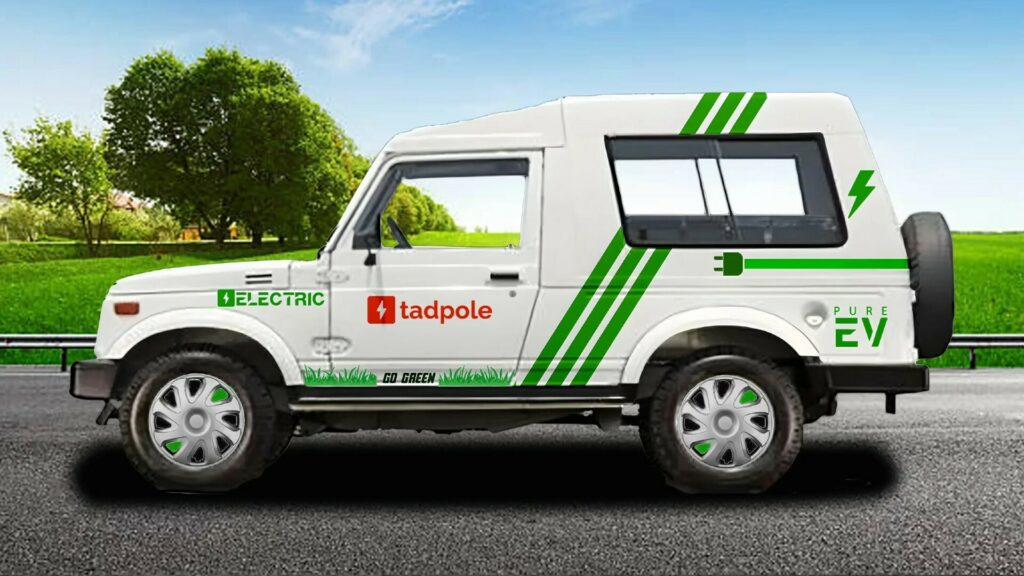Suzuki recently confirmed the launch of a new fully electric Jimny for Europe, but it appears that an Indian startup called Tadpole Projects has beaten them to the punch. The company has converted a Maruti Suzuki Gypsy army service vehicle into a Jimny-based zero-emission vehicle.
Let’s start with the basics. The Maruti Suzuki Gypsy is an Indian-made pickup based on the long-wheelbase variant of the second generation SJ40/410 Jimny. The Gypsy remained in production between 1985 and 2018 and is one of the most widely used vehicles in the Indian Army. This is why the EV-converted prototype was shown at the biennial Army Commanders Conference (ACC) event.
Read: British Army To Convert Old Land Rover Defenders From Diesel To Electric
Tadpole Projects, known for offering EV conversions of vintage cars such as the original VW Beetle and the Suzuki Gypsy, was a natural fit for this project. The conversion kit includes a single electric motor with 40 hp (30 kW / 41 PS), which is directly connected to the original transmission and 4WD system of the Suzuki Gypsy, providing a familiar driving experience.
The Maruti Suzuki Gypsy EV’s zero-emission range is 120 km (75 miles), which falls short of modern standards. The battery specifications are currently unknown, but Tadpole Projects provides four different battery package options on their official website. These packages have battery capacities of 1,440 Wh, 1,536 Wh, 1,920 Wh, or 8,640 Wh, with charging times ranging from 2 to 6 hours.
While there are no additional details about the project, it is possible that some of the soon to-be-retired Maruti Suzuki Gypsy units that belong to the Indian Army could get an EV-conversion, extending their lifecycle with the new and cleaner powertrain. A comparable strategy has already been implemented in other countries such as the UK. As per a report by Rushlane, the Indian Army is “extremely familiar with Gypsies, disassembling and re-assembling them in a matter of minutes”, so installing the Tadpole Projects conversion kit should not pose a significant challenge.









